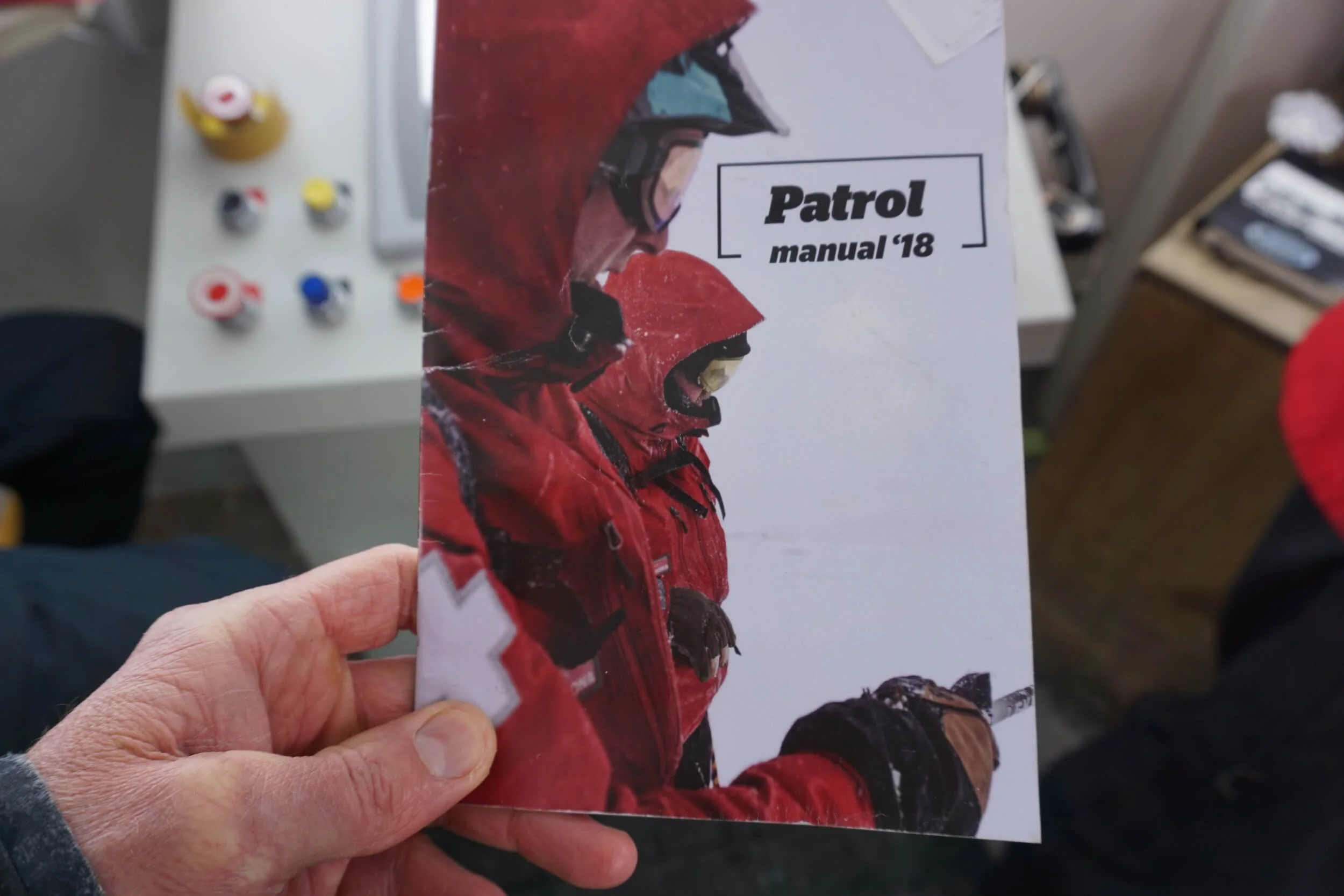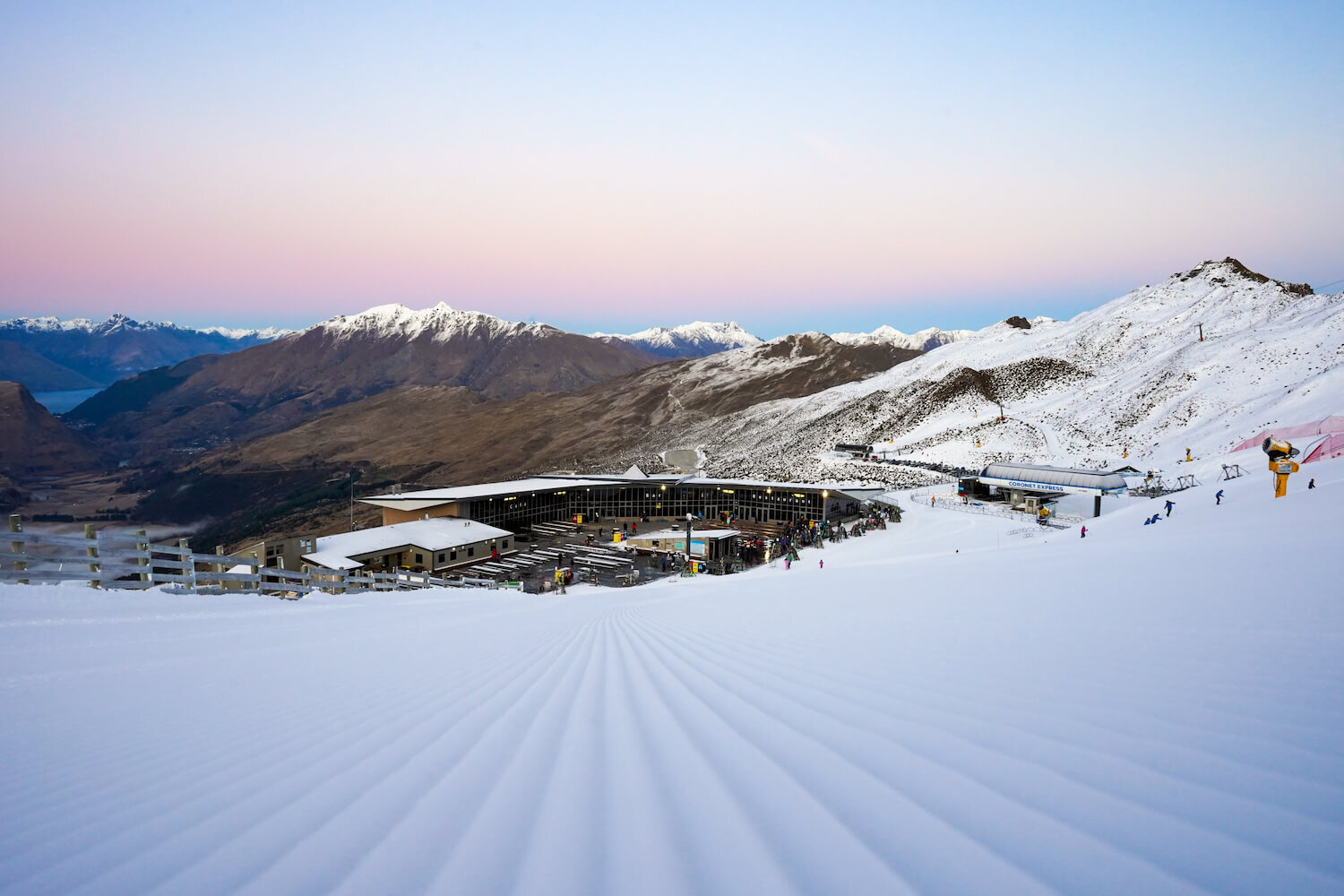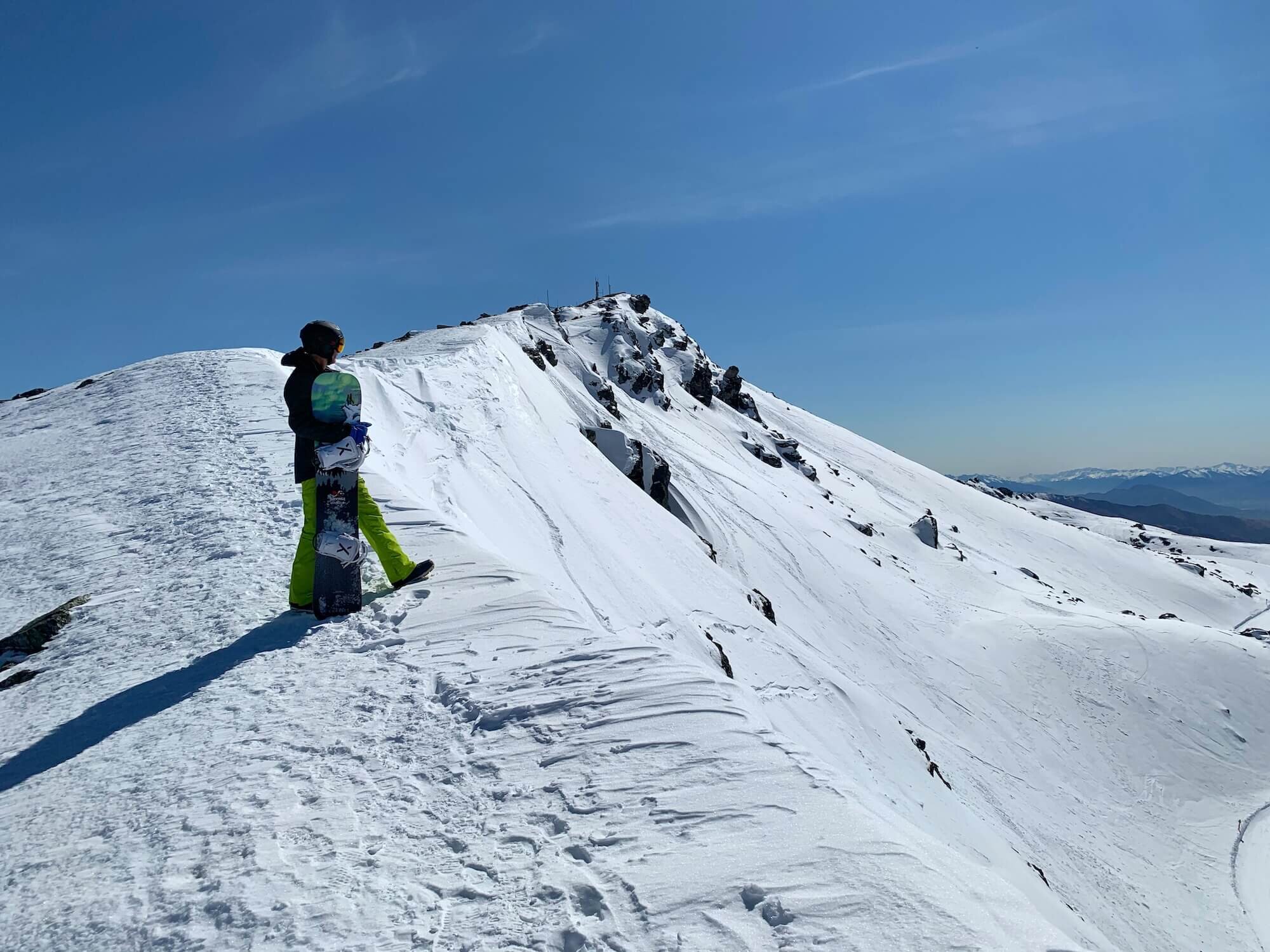Unsung Heroes – A Day In The Life Of Ski Patrol
Skiing and snowboarding is what we live for and many of the best days we’ve had in our life involve being on the snow and in the mountains. And for all the fun, adventure, adrenaline, and exploration, there is an element of risk and danger we usually try not to think about. Although you may not think about it, there is a team of dedicated men and women who do the thinking for us which ensures a day on the mountain remains an exceptional experience with reduced risk.
You’ve seen these guys around the mountain, usually decked out in red with a white cross on their jackets. Apart from opening up the runs in the morning for people to get their first tracks, or making sure everyone is safely off the mountain once the last lift has stopped, you might not think much more about the ski patrol team. But their job starts way before you get to the mountain and finishes by the time you’re sitting in the bar sharing your stories with your mates at the end of another epic day.
What’s a day in the life of a ski patroller look like?
Recently, I was lucky to spend a day with the ski patrol team at Cardrona Alpine Resort, tagging along as they went about their day making the mountain safe. Getting a ‘behind-the-scenes’ look at what a ski patroller does has given me a new-found respect for what these guys do.
It all starts at 6:00am.
On non-avalanche mitigation day, one lucky patroller will be on the mountain at 6:00am. At Cardrona, that means leaving Wanaka at 5:30am… It’s important to have a ski patrol presence on the mountain at these early hours to safeguard the lift ops and maintenance crew as they go about their morning routines.
The rest of the ski patrol team arrive for a 7:45am briefing in the medical centre, apart from fresh snow days when avalanche mitigation needs to take place – then the whole team will be on the mountain by 6:00am.
PREPARING THE EXPLOSIVE FOR AVALANCHE MITIGATION
Keep in mind on the smoothest of days, they won’t leave the mountain before 5:00pm so it makes for a pretty long day. Taking this into account, the team at Cardrona work a 9-day fortnight allowing a bit of time for R&R, which usually involves more snow activities, like back-country exploring. After all, you don’t work on the ski patrol team unless you love the mountains and the snow!
For us snow fanatics, discussing the weather is an important part of our day and it’s no different with the ski patrol team - it’s the first topic on the agenda at the morning brief. Next up, any special events will be listed along with anticipated guest numbers for the day. Lastly, the head patroller will assign teams to areas.
At Cardrona, it means assigning a team to Captain’s basin, a team to the main basin who’ll be based at ‘Crow’s Nest’ at the top of McDougall’s Chondola and a team in the dispatch/medical centre. On a busy day there’ll be 8 patrollers in the field and 2 in dispatch. Next year with Pringles opening, team numbers with go up to 10+2.
Heading Out.
With the briefing over and areas assigned, the patrollers gear up, which includes emergency first aid kit, avalanche gear (probe, shovel, beacon) and radios. The first order of business out on the mountain is to identify any hazards, then either remove or sign post them. On my particular day, we removed a number of rock-hard snow lumps that were on-piste and signposted areas of icy, uneven snow, both of which would have ended in tears, or most likely worse, if a skier or snowboarder hit them unexpectedly.
REMOVING HAZARDS AND ERECTING CAUTION SIGNS
Next up, caution signs e.g. ‘Slow Down’, ‘Trails Merge’, and visibility flags were set up. Along the way boundary signs and fences were checked. And before the mountain is given the all clear to open, the weather station is checked. Things like snowfall and temperature are recorded. In fact, air temp, surface temp and temperature 10 cm below the surface are recorded – the bigger the difference in these temps, the more unstable the snowpack.
WHEN THE WEATHER CLOSES IN YOU’LL BE GRATEFUL FOR THE VISIBILITY FLAGS!
Once ski patrol is happy with the state of the mountain, they will advise the lift operations team the mountain is clear to be opened.
RECORDING INFORMATION GATHERED AT THE WEATHER STATION
The patrol team will now head to their base for the day (Captain’s top lift station or Crow’s Nest) and record conditions and run status on an iPad app.
What happens when someone has an accident?
Once an accident is reported, the dispatch team will decide which team will attend. Having a central dispatch unit optimises efficiency as they have the best understanding of the location of the team around the mountain. I really like the way this is set up - it means ski patrol can get to an incident quickly and if required, efficiently back to the medical centre.
Once the patrol team arrive at the accident scene, they assess the situation to see if transport back to the medical centre is required. They’ll administer emergency medical treatment if necessary and radio in for a stretcher if needed. These days the majority of on-piste patient transport will be done with a trailer-sled behind a snowmobile. The sled, designed by one of Cardrona’s own ski patrollers, has suspension and a seat for the doctor.
Off-piste or difficult to access terrain rescues may still require the old-style taboggans, which are guided down the mountain by two patrollers. There are plenty of taboggans scattered around the mountain, including at the top of the half pipe and Big Air, so if required there’s always one readily available.
OLD SCHOOL TABOGGAN STILL USED IN DIFFICULT TO GET TO TERRAIN. OTHERWISE THE NEW PATIENT TRAILER TOWED BY THE SKI-DOO IS USED FOR THE SAKE OF EFFICIENCY
In the medical centre there is a doctor and a nurse who will decide on the best course of action for the injured person.
What does the ski patrol team get up to in the ‘downtime’?
Luckily not many accidents happen but the patrol team are always prepared – you know the saying, “wish for the best, prepare for the worst”. And to ensure they’re always prepared, when the team isn’t saving your life, their time is taken up practicing and improving their rescue skills and checking and restocking emergency equipment. Additionally, regular checks are required around the mountain to monitor the condition of hazards and snow, check signage, barriers and boundary fences.
Skills like beacon training, rope rescue (which may include winching people up out of a crevasse), and emergency lift evacuation (when a lift breaks down and each guest has to be harnessed and lowered from the elevated chairs) are practiced regularly.
Each lift station and café has emergency first aid equipment, such as defibrillators, oxygen and airway tubes, and pain management, e.g. nitrous oxide, green whistle (Penthrox® – methoxyflurane). These are constantly checked and tested – everything needs to be 100% in case they’re ever needed.
End of day activities.
As the day starts to wind down, patrol head out to collect all the caution and hazard signs, and the visibility flags. And then the ‘sweep’ commences.
It may seem like a simple task but the ‘sweep’ is critical for the safety of the guests. A slip-up in the sweep could lead to fatal results – getting stuck on a chair overnight in sub-zero conditions is not how I’d like to go… Ski patrol will take the last lift up and clearly communicate to the lifties this is the last chair and no more guests are allowed on. Once at the top, the team have specific vantage points to ensure the whole mountain is checked as they ride down, making sure no one is left on the mountain.
If all is well, the patrol team meet back at the medical centre base, has a debrief on the days activities and then head home for a well-earned rest.
Are you inspired by these men and women and want to become a ski patroller?
If you love the mountains and snow and have a genuine desire to help people, becoming a ski patroller would be a very rewarding career. It’s definitely something I’ve considered and will look at doing once my optometry career starts to wind down.
But how do you become a ski patroller? Having industry insight is definitely an advantage and many of the patrollers have previously worked in the ski industry or on the mountain. And you have to be able to ski very well. As much as I love snowboarding, it’s just not suited to the demands of a ski patroller.
To get your foot in the door, having either some type of EMT/paramedical training or doing a Ski Patrol course is a must. Most of the patrollers at Cardrona have done the world-renowned ski patrol course through Tai Poutini Polytechnic, which involves an intensive 26-week course, including a 4-week work experience placement.
Ski Patrol – our unsung heroes on the mountain.
I thoroughly enjoyed my day with the Cardrona ski patrol team and it definitely has given me a new respect for these amazing people. Their purpose is to make the mountain safe so you and I can get on with what we love doing.
Do you need some more information or have any questions? Or do you work as a ski patroller and would like to add something? If so, hit me up below!
Ride on.
Mick
P.S. A huge and special thanks to the ski patrol team at Cardrona. They were all super helpful, friendly, and knowledgeable, not to mention very patient fielding my 101 questions throughout the day!
Save this on Pinterest! Just hover over the image below and click the Pin It Button.
















